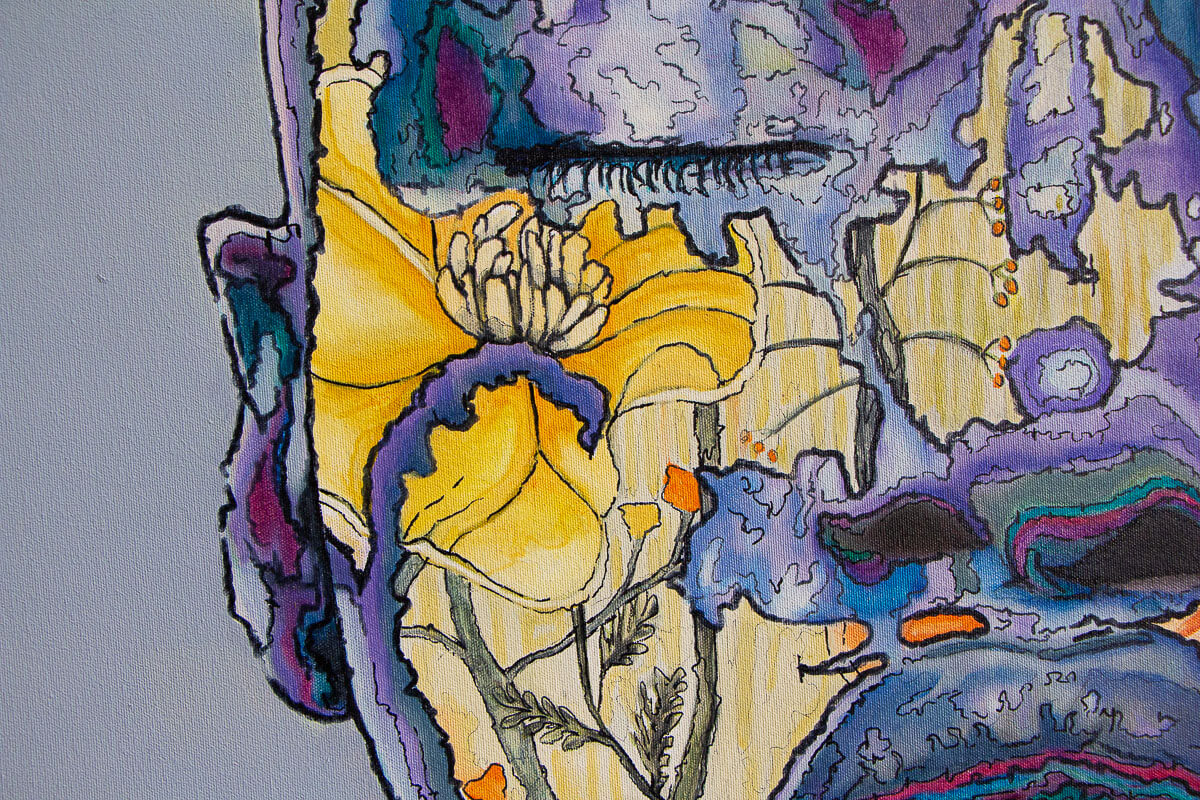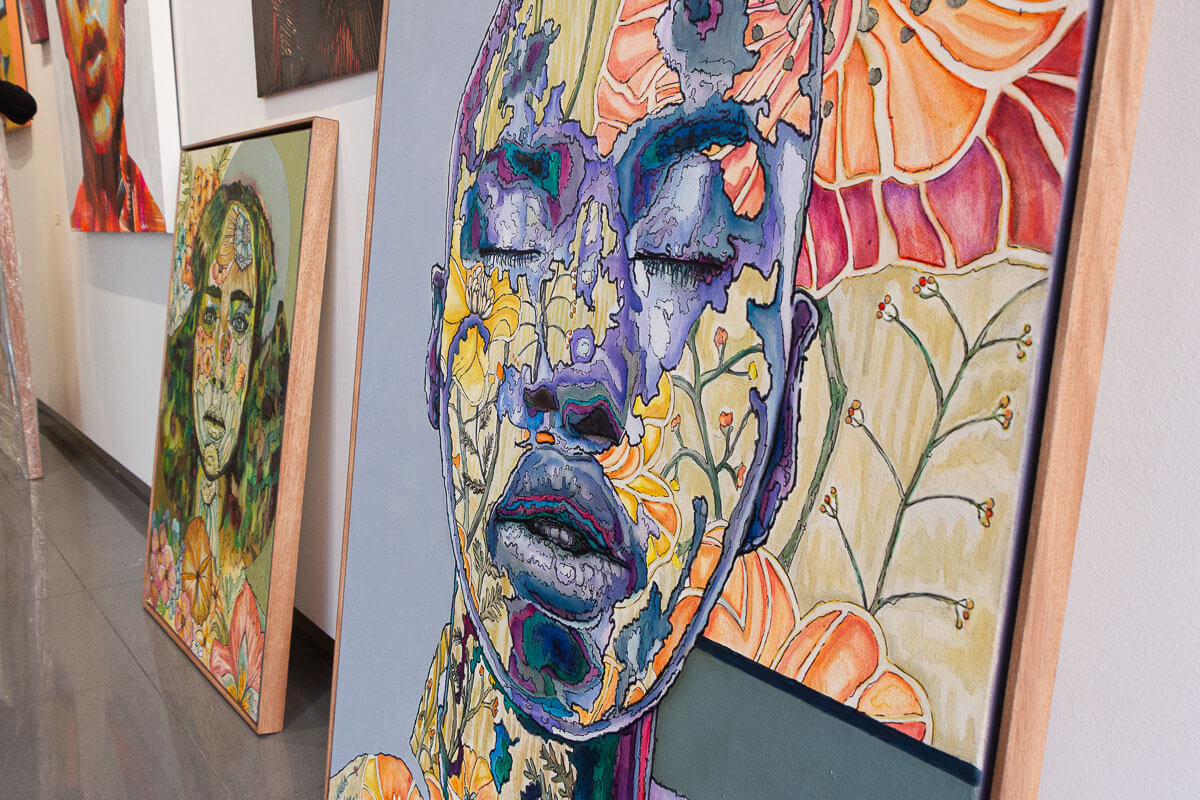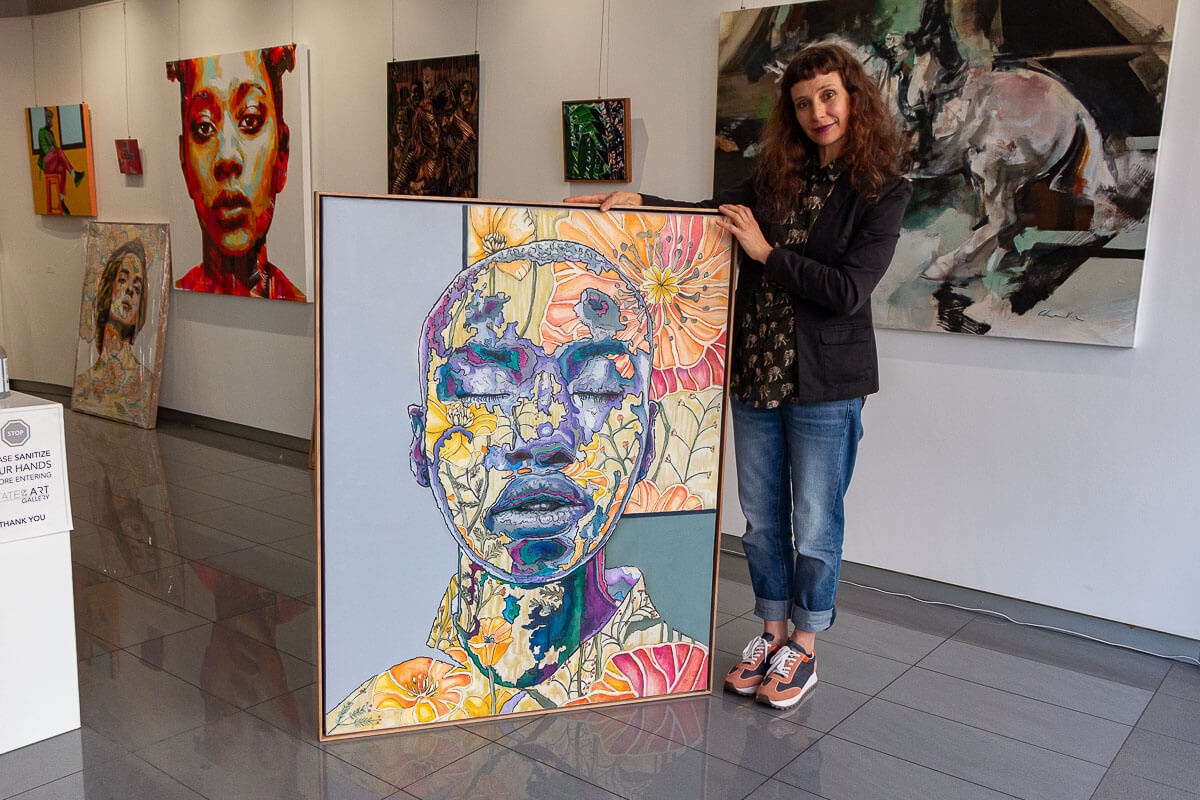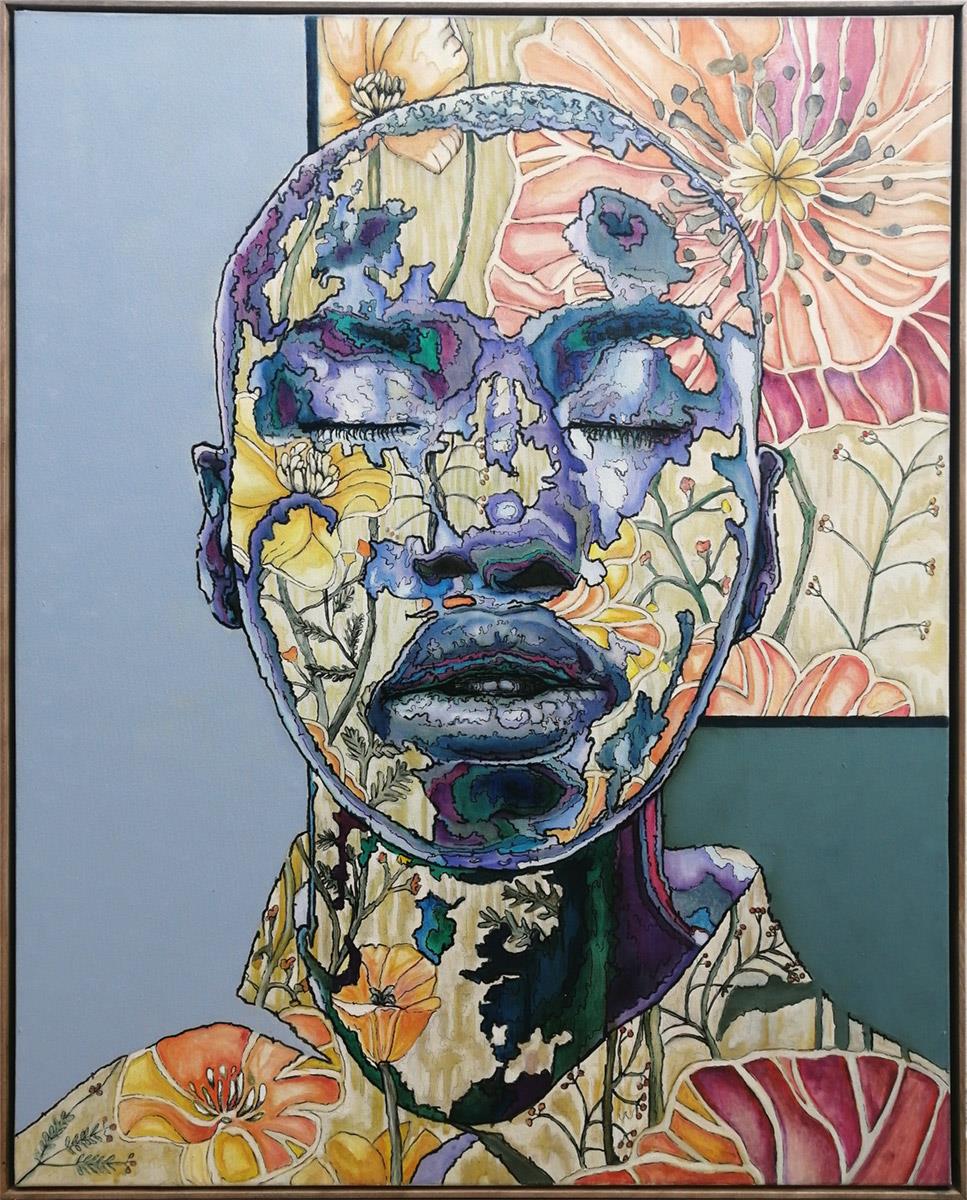Anina Deetlefs was born in Cape Town and grew up in the Northern suburbs. She obtained a Degree in Graphic Design at the University of Stellenbosch in 1995. She worked both locally and internationally and was a finalist in the Sasol New Signature Competition, The Sanlam Portrait Awards and the StateoftheART Gallery Award.
Anina found her niche in large and small portrait and figurative studies with meticulous attention to detail. The themes she uses are relatable and inspiring to the viewer. Throughout her work she challenges viewers to find their own interpretation of reality. She draws her inspiration from everyday life, with deep roots in heritage, childhood, womanhood and relationships.
Through her work she embodies human growth and spiritual enlightenment by her awareness of the unique nature of humankind.
We caught up with artist Anina Deetlefs and chatted about her latest artwork ‘Amani’ and her process of creating her popular floral portraits by combining portraiture with her love of graphic design and textiles while paying close attention to the names, meaning and symbolism in each piece.
WATCH: a process video of the creation of ‘AMANI’ by Anina Deetlefs:
What is the background of your floral portraits and how did the idea develop?
I've always done both figurative and portraiture works and I have a real love for both. About five to six years ago I started doing florals and in my floral paintings I specifically started using mixed media - playing around with pencil and oil and overworking it with pen. These florals ended up being recreated in both pottery ware, t- shirts for wine farms such as LA Motte and textile designs under the brand name Tjirpie.
The floral portraits came about a year ago, when I decided that I wanted to combine the two disciplines – I had my portraiture, which was more traditional in style, but I wanted to bring that exciting, contemporary, mixed media element of my florals into the portraiture genre.
I studied graphic design aeons ago, so I have a strong design background that you don't really see in my fine arts work. I also used to work in the interior design field in New Zealand and love textile designs. I thought there must be a way that I can combine all of my passions and loves into one visual work. That's how the floral portraits came about.
Tell us about your process when creating a floral portrait?
I start off by selecting a face. I love unusual faces, mostly female with strong features. These facial features act as a framework since I remove large areas that will be replaced with patterns. I play around with the structural lines, cutting out areas here and there and changing the colour. When that's done, I have an extensive pattern library by this time, mostly made up of retro fabric design patterns. This is the fun part.
I start experimenting with overlapping floral patterns until I find a design that works with the facial contours, expression and colouring. The pattern acts almost like a tattoo in a certain sense as it becomes part of the portrait and the portrait becomes part of the pattern. After that I move onto the background. I love the clean lines and fresh designs of the mid-century modern design movement. The end result is a dramatic play between facial expressions and features; floral beauty; stark, minimal design; fine art; and graphic design…. A true mish-mash of everything that appeals to me on a creative level.
Now that the planning and designing is done, I move onto my canvas, do my drawing and start painting. When the layer of oil paint is dry, I rework the whole facial design with various sizes of pens. The portrait really is one large contemporary pattern at this stage. Usually while working I will be thinking about what the flowers, and the specific face, brings to mind. What images, feelings and thoughts does she - or he - conjure up. These floral portraits are all intended to be uplifting, so I love adding an extra layer of meaning to my work with the intention that when the future owner admires the piece, they will always be reminded of the positive message behind this beautiful floral face.
I am a reader and history lover, especially mythological tales. Now is the time that I will do a bit of research to find a suitable name rooted in myth, legend or fairy tale. Art, after all, should always remain a fantastical escape.
With ‘Amani’ - I was inspired by the fact that her eyes are closed and she has a very peaceful expression, so I started rooting around in African mythology, African words and their meaning. I wanted a title that conveyed peace and tranquillity and thus Amani, rooted in the Swahili culture, came about. I have a love for symbolism and will always try and find out what a specific colour or flower means, if anything. Here I worked with graphic minimal poppies. The poppy has several historical symbolic meanings in different cultures: tranquillity, peace, prosperity, escape, death and eternal rest.

How long did this work take you to complete?
I would say the designing itself took me about four to six hours, it always depends on how quickly it all comes together and sort of happens. Then the drawing and painting etc. takes about a week to two weeks of intensive painting.

About AMANI:
‘Amani (aa-mah-nee) is such a sweet sounding word. When you say it out loud, it rolls off your tongue. As with all the floral portraits, I wanted to convey a certain feeling, a presence, when you look at the piece. I also wanted a title that had African origins, since I am an inhabitant of our great continent, Africa.
Tranquillity is expressed both in the subject's facial features and through the use of deep blue tones. I love the play between the stark, flat colour blocks and the incredibly detailed floral areas. It is almost as if the busy areas represent our overactive minds and the plain pools of colour, quite focused mindfulness.
The word Amani means ‘peace, harmony and tranquillity’.
The Swahili word for peace features prominently in daily life in Kenya. Associated worldwide with calm and reason, amani is not just about the absence of chaos; it also refers to tranquillity, peace of mind and serenity. It is used in the Kenya National Anthem, urging Kenyans to live in peace, unity and freedom with each other. The Hebrew meaning is equally significant. Here Amani means wishes and aspirations.
The name Amani is an Arabic male name; but is also a prominent Swahili name, it is a unisex name in Africa.’

Why do you think viewers are so drawn to these works?
It seems to me what appeals the most to art collectors and art lovers is that these paintings have a positive presence. That is exactly why I create them.
I designed and painted my first floral portrait about a year ago during our level 5 lockdown for COVID in South Africa. We, along with the rest of the world were so immersed in that feeling of darkness, depression and fear, while fighting this unknown, devastating virus. It truly was a horrible time. At that stage I just wanted to create something that was beautiful - not just for my own sanity sake - but for a larger audience too. At that time art via social media platforms such as Facebook and Instagram had a huge role to play. Art offered a refuge, an escape and a positive influence during an exceedingly negative period in world history.
So for me, you really do not need to know the story behind the faces or the meaning behind their names, you can just admire their beauty. If you come across one of these floral goddesses via social media or in a gallery and you stop to admire their beauty and forget your worries and woes of daily life for just a moment, my job has been done.
These works are for individuals such as myself: everyday men/women who choose to spend their hard earned money on a work of art that brings them endless joy within a stressful life. When their workday is done and they enter their home and find this floral beauty greeting them, they should feel that this is their sanctuary, their safe space, their joyful place.

‘Amani’ / oil paint & ink on canvas / 106 x 131 x 4cm (framed)

